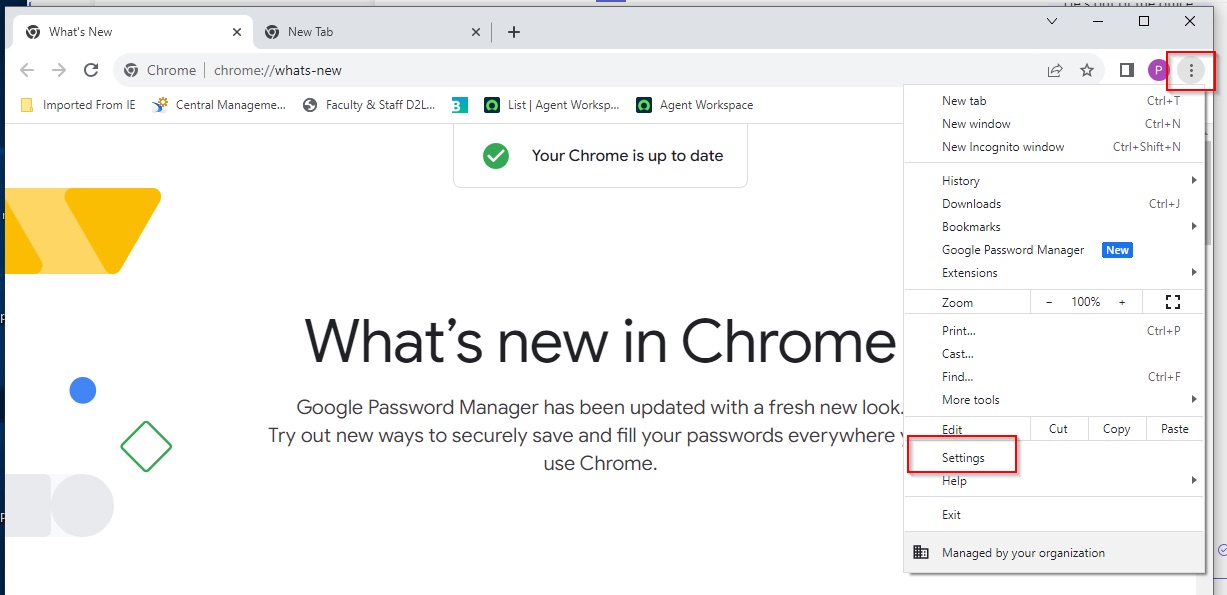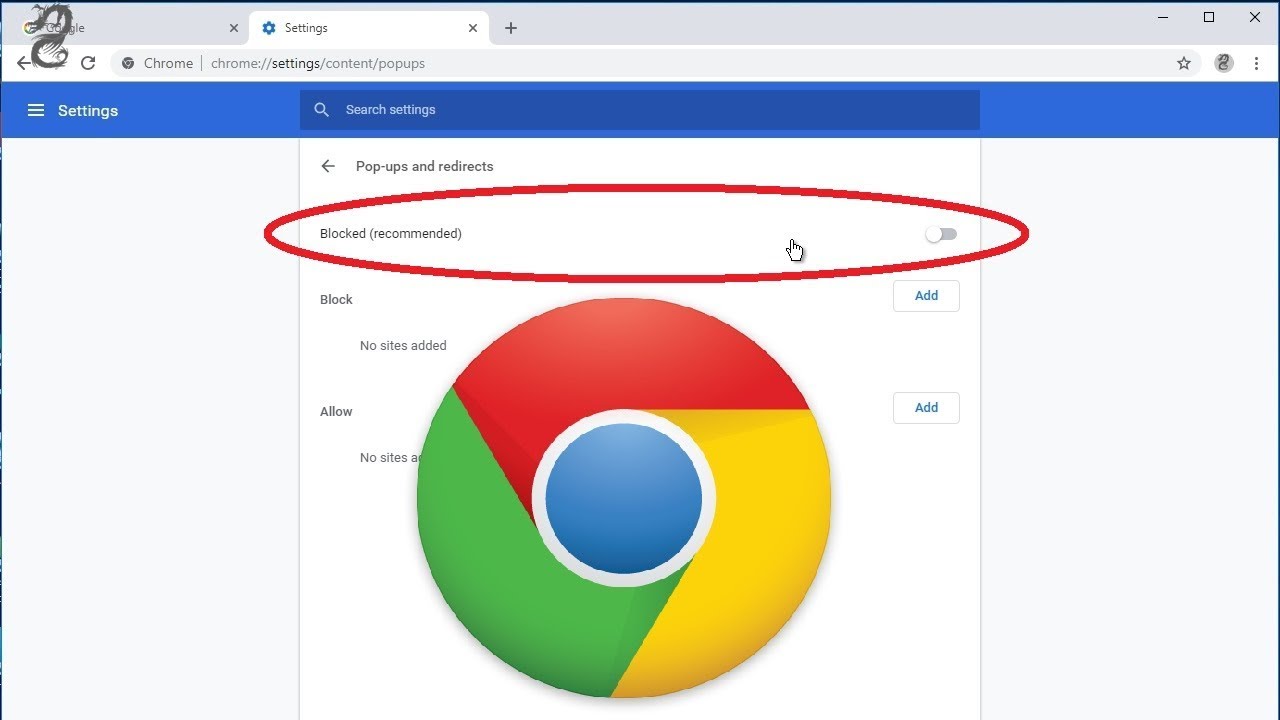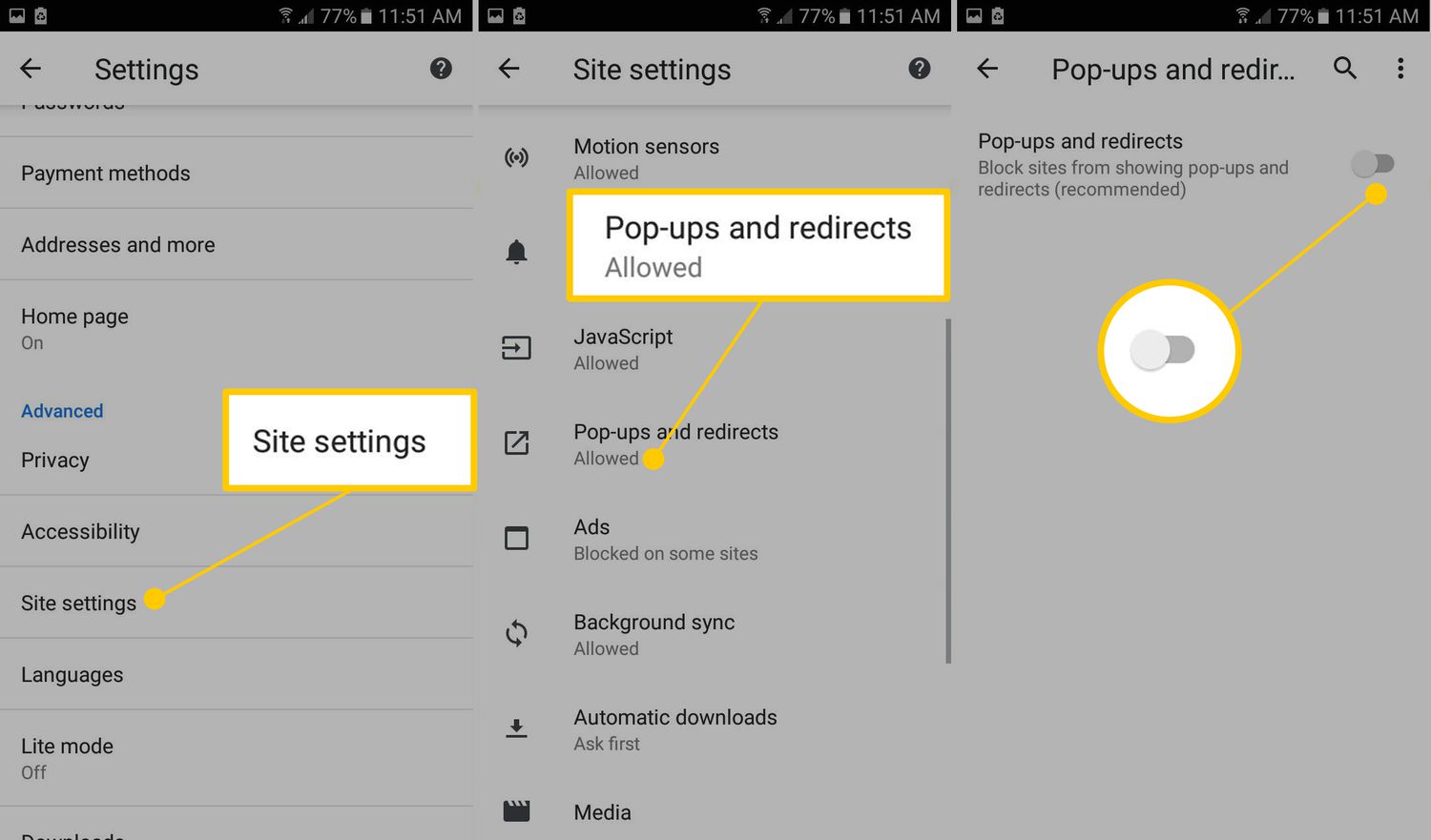Introduction
Browser redirects can be frustrating and disruptive, often leading to a less-than-ideal online experience. Whether you're casually browsing the web or conducting important research, unexpected redirects can throw you off track and compromise your productivity. Fortunately, understanding the underlying causes of browser redirects and learning effective strategies to prevent them can significantly improve your online navigation.
In this comprehensive guide, we will delve into the intricacies of browser redirects, shedding light on the common triggers behind these unwelcome detours. By gaining a deeper understanding of the factors that contribute to browser redirects, you'll be better equipped to take proactive measures to mitigate their impact. From malicious scripts to unintentional user actions, there are various reasons why browser redirects occur, and we'll explore these in detail.
Moreover, we'll equip you with practical tips and strategies to stop browser redirects in their tracks. By implementing these measures, you can safeguard your browsing sessions and enjoy a smoother, uninterrupted online experience. Whether you're a seasoned internet user or just getting started, the insights shared in this guide will empower you to navigate the digital landscape with confidence and ease.
So, let's embark on this enlightening journey to unravel the mysteries of browser redirects and equip ourselves with the knowledge and tools to combat them effectively. Together, we'll uncover the root causes of browser redirects and discover actionable solutions to prevent them, ultimately reclaiming control over our online browsing experiences.
Understanding Browser Redirects
Browser redirects refer to the phenomenon where a web page or URL automatically takes you to a different destination than the one you intended to visit. This can be a frustrating experience, disrupting your browsing flow and potentially exposing you to unwanted content or security risks. Understanding the various forms and underlying mechanisms of browser redirects is crucial in effectively addressing and preventing them.
Types of Browser Redirects
1. 301 Redirects
A 301 redirect is a permanent redirect from one URL to another. It is commonly used when a web page has been moved to a new location. This type of redirect is crucial for maintaining search engine rankings and ensuring that users are directed to the correct page.
2. 302 Redirects
A 302 redirect is a temporary redirect that sends users to a different URL for a limited period. It is often used when a website is undergoing maintenance or when a page needs to be temporarily redirected to another location.
3. Meta Refresh Redirects
Meta refresh redirects are implemented using HTML meta tags to automatically take users from one web page to another after a specified time interval. While these redirects can be legitimate, they are also commonly exploited by malicious actors to redirect users to harmful websites.
Causes of Browser Redirects
Malicious Scripts
Cybercriminals often deploy malicious scripts on compromised websites to redirect unsuspecting users to phishing sites, malware-infested pages, or fraudulent content. These scripts can hijack the browsing experience, leading to potentially harmful outcomes.
Unintentional User Actions
In some cases, browser redirects may occur due to unintentional user actions, such as clicking on misleading ads, pop-ups, or deceptive links. These actions can trigger automatic redirects to unrelated or potentially unsafe websites.
Browser Extensions
Certain browser extensions, often installed unknowingly, can manipulate the browsing experience by redirecting users to specific websites or injecting unwanted content into web pages. These extensions may compromise the security and integrity of the browsing environment.
Impact of Browser Redirects
Browser redirects can have various negative implications, including:
- Disrupting user experience
- Exposing users to malicious content
- Compromising online security and privacy
- Undermining the credibility of legitimate websites
By understanding the diverse forms and underlying causes of browser redirects, users can proactively identify and address potential issues, thereby enhancing their online safety and browsing experience.
Common Causes of Browser Redirects
Browser redirects can stem from various sources, often leading to unexpected detours from intended web destinations. Understanding the common causes of browser redirects is essential for effectively addressing and preventing these disruptions. Here are the primary factors contributing to browser redirects:
Malicious Scripts
Cybercriminals frequently employ malicious scripts on compromised websites to orchestrate unauthorized redirects. These scripts can surreptitiously manipulate the browsing experience, leading unsuspecting users to phishing sites, malware-infested pages, or deceptive content. By exploiting vulnerabilities in web platforms, these malicious actors can hijack user sessions and expose them to potential security risks.
Unintentional User Actions
Inadvertent user interactions with misleading ads, deceptive pop-ups, or disguised links can trigger automatic redirects to unrelated or potentially hazardous websites. Clicking on seemingly innocuous elements within web pages can inadvertently initiate redirection to destinations that deviate from the user's original intent. This underscores the importance of exercising caution and discernment while navigating the online landscape to mitigate the risk of unintended redirects.
Browser Extensions
Certain browser extensions, often installed without users' full awareness, have the capability to manipulate the browsing experience by initiating redirects to specific websites or injecting unwanted content into web pages. While some extensions may offer legitimate functionalities, others may compromise the security and integrity of the browsing environment, leading to disruptive and unauthorized redirects.
Search Engine Result Page (SERP) Manipulation
In some instances, malicious entities engage in tactics aimed at manipulating search engine result pages (SERPs) to redirect users to deceptive or irrelevant websites. This can involve the creation of fraudulent web pages or the exploitation of SEO techniques to artificially elevate the ranking of malicious sites, ultimately leading unsuspecting users astray.
Outdated Software and Security Vulnerabilities
Outdated web browsers, plugins, or operating systems can harbor security vulnerabilities that malicious actors exploit to execute unauthorized redirects. By leveraging known vulnerabilities, attackers can compromise the integrity of the browsing experience, potentially exposing users to harmful content or security breaches.
By recognizing these common causes of browser redirects, users can adopt proactive measures to mitigate the associated risks and safeguard their online browsing activities. Implementing robust security practices, exercising vigilance while interacting with online content, and regularly reviewing installed browser extensions are essential steps in combating the prevalence of browser redirects.
How to Stop Browser Redirects
Preventing and mitigating browser redirects is essential for maintaining a secure and uninterrupted online browsing experience. By implementing proactive measures and leveraging effective strategies, users can significantly reduce the occurrence of unwanted redirects. Here are actionable steps to stop browser redirects:
1. Install Reliable Security Software
Deploying reputable antivirus and anti-malware software can serve as a crucial line of defense against malicious scripts and unauthorized redirects. These security solutions can detect and neutralize potential threats, safeguarding users from deceptive websites and harmful content.
2. Keep Software Updated
Regularly updating web browsers, plugins, and operating systems is vital for addressing known security vulnerabilities that could be exploited to orchestrate browser redirects. By staying current with software updates, users can fortify their digital defenses and minimize the risk of unauthorized redirection.
3. Review and Remove Suspicious Browser Extensions
Periodically reviewing installed browser extensions and add-ons is essential for identifying and removing potentially malicious or intrusive components. Users should scrutinize the permissions and functionalities of each extension, uninstalling any that exhibit suspicious behavior or unauthorized redirecting capabilities.
4. Exercise Caution When Clicking Links
Practicing discernment and vigilance when interacting with online content, especially ads, pop-ups, and unfamiliar links, can help prevent unintentional triggers for browser redirects. Users should refrain from clicking on dubious or unsolicited links to minimize the risk of being redirected to deceptive or harmful websites.
5. Enable Pop-Up and Ad Blockers
Utilizing pop-up and ad blockers within web browsers can effectively mitigate the risk of encountering misleading or malicious content that may trigger unwanted redirects. These blockers help create a more controlled and secure browsing environment, reducing the likelihood of falling victim to deceptive redirection tactics.
6. Clear Browser Cache and Cookies
Regularly clearing browser cache and cookies can help eliminate stored data that might be leveraged to facilitate unauthorized redirects. This practice can enhance privacy and security while minimizing the impact of potentially compromised browsing data on redirect occurrences.
7. Verify Website Authenticity
Before interacting with unfamiliar websites or clicking on links, users should verify the authenticity and legitimacy of the destinations. This can involve scrutinizing the URL, checking for secure connections (HTTPS), and assessing the reputation of the website to mitigate the risk of falling victim to deceptive redirects.
By implementing these proactive measures and adopting a security-conscious approach to online browsing, users can effectively mitigate the impact of browser redirects and cultivate a safer and more seamless digital experience. Taking a proactive stance against potential threats and unauthorized redirection tactics is paramount in safeguarding personal data, privacy, and overall online well-being.
Conclusion
In conclusion, browser redirects can significantly disrupt the online browsing experience, posing risks ranging from exposure to malicious content to potential security breaches. By gaining a comprehensive understanding of the underlying causes of browser redirects and implementing proactive strategies to mitigate their impact, users can reclaim control over their digital journeys.
The diverse forms of browser redirects, including 301 and 302 redirects, as well as meta refresh redirects, underscore the multifaceted nature of this phenomenon. Whether stemming from malicious scripts, unintentional user actions, or manipulative browser extensions, the causes of browser redirects are varied and often elusive. However, by recognizing these triggers, users can adopt a vigilant and informed approach to navigating the online landscape.
The prevalence of browser redirects necessitates a proactive stance in combating their disruptive effects. Leveraging reliable security software, maintaining up-to-date software, and exercising caution when interacting with online content are pivotal steps in preventing unauthorized redirects. Additionally, the periodic review and removal of suspicious browser extensions, coupled with the enablement of pop-up and ad blockers, can fortify the digital defenses against deceptive redirection tactics.
Furthermore, the importance of clearing browser cache and cookies, as well as verifying the authenticity of websites before engaging with them, cannot be overstated. These practices not only enhance privacy and security but also contribute to a more controlled and secure browsing environment.
By embracing these proactive measures and integrating them into their online routines, users can significantly reduce the occurrence of unwanted redirects and safeguard their digital well-being. Ultimately, the empowerment to navigate the digital landscape with confidence and resilience lies in the proactive adoption of security-conscious practices and the cultivation of a discerning approach to online interactions.
In essence, the journey to stop browser redirects is a collective endeavor, requiring a harmonious blend of user vigilance, technological fortification, and informed decision-making. By equipping themselves with the knowledge and tools to combat browser redirects, users can reclaim agency over their online experiences, fostering a safer, more secure, and uninterrupted digital journey.

























